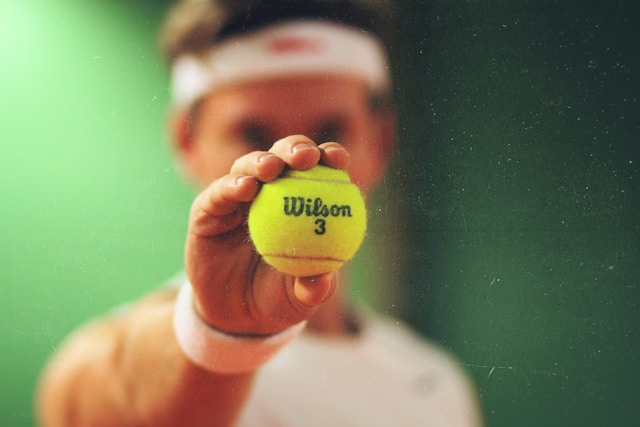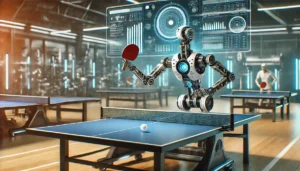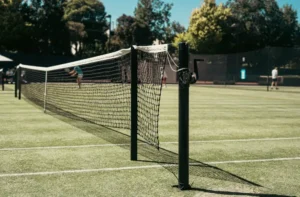10 Best Games Similar to Table Tennis
Table games in general, ping pong or table tennis is one of the very popular fast-use competitive two categories that rely on quick reflexes and good hand-eye coordination. But what if you want something a bit different — but still similar enough to scratch that ping pong itch? Maybe you want some other games to enjoy or a whole new sport to train in, we have something here for everybody. So here are the 10-best alternative ping pong games, which although add twists to traditional play still possess a combination of fast action and competitiveness of some form!
1. Badminton
When we are speaking of a game that is primarily racquet-based then the first thing to come in mind as well as table tennis must be Badminton. Used with a puck and a stick, court game is an indoor as well as outdoor game. Then all, the goal is to hit the shuttlecock over on net and into their court as it can be seen in ping pong. And while there is more room the use of skill and quick reflexes still make it a viable means of survival.

- Similarities: Emphasize hand-eye coordination, short rallies in game play and tactics.
- Differences: Large-mouthed tennis court, played with a golf club instead of a ball.
2. Pickleball
Pickleball is a pickle in the sports world table and if compared with Table Tennis it looks like rising. It is played over a kind of mesh and combines the different characteristics which are tennis, badminton, or ping pong. It is an ideal alternative for those who want to play sports but do not have much time. The game, played with paddles and a perforated plastic ball on a small tennis-like court, involves strategy as well quick reflexes. The rules are simple and can be taught quickly, suitable for all ages.
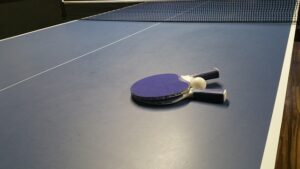
- Similarities: Bats, strategic ball positioning, quick rallies.
- Differences: Played on a court, somewhat more leisurely gameplay due to the larger surface.
3. Air Hockey
If you are in favor of a sport that does not require racquet but still offers fast-paced competitive action then choose for air hockey. A fast-paced sport, played with a puck on an ice surface using two paddles and the object is to be returned by spinning it into your opponent’s goal. Similar to ping-pong, it demands quick reflexes and wariness, yet less dependent on delicacy.
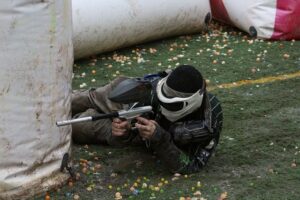
- Similarities: Fast reflexes, quick back-and-forth play, small playing area.
- Differences: No racquets, played with a puck and goals instead of a net.
4. Squash
Squash is a high impact indoor racquet game played with a rubber ball against the wall. Combining a small, enclosed court with the speed of the ball leads to an interestingly power-based, physical game. Like table tennis, it involves precision, speed, and strategy, though it requires a bit more physical endurance.
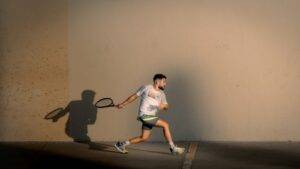
- Similarities: Racket sport, quick reactions, and strategic placement.
- Differences: Larger space, played in an enclosed area against walls.
5. Tennis
Tennis is a sport on another belt but in essence, it gives birth to its table version. These two games are related in that they both involve hitting a ball with rackets across an internet. The servers, how one handles balls and their location on the tennis court are similar too. So it is perhaps no surprise that ping pong players looking to move from indoors to its outdoor relative see another sport with which they can perform well.
- Similarities: Racquet-based, net play, similar ball control strategies.
- Differences: Large-mouthed court, more actively involved, higher mental demand.
6. Foosball
Table Soccer or Foosball This game carries the same intensity level seen in Table Tennis, but is on a different type of tabletop. Players manipulate miniature figures attached to rods in an effort to push a small ball into the net of their opponent’s. Foosball is similar to ping pong where in quick reflexes, great hand coordination and decision-making takes the upper hands.

- Similarities: Tabletop game, flying actions, competitive.
- Differences: No tennis equipment or net, focus is on goal scoring.
7. Paddle ball
Paddle ball requires very little equipment and can be played on a beach or indoors. Two players hit a small rubber ball back and forth using paddles. Slower than ping pong is, but again it develops better hand-eye coordination and faster reaction time. As alternative for good 😉
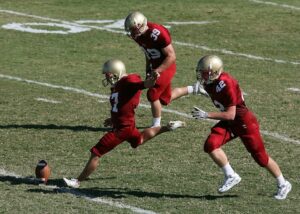
- Similarities: Paddles, quick reaction times, simple gameplay.
- Differences: Often played in casual settings like beaches or parks.
8. Speedball
Speedball: The name — you guessed it! — is a mashup between tennis, squash, and table tennis. The game is typically played with a ball on a string threaded through an attached pole and the objective to hit it in such a way that your opponent won’t have time, or can’t get there all together. You have to be fast, intense and stay focused the whole race like in table tennis.

- Similarities: Racquet sport, fast-paced, quick hand-eye coordination.
- Differences: Played with a tethered ball, no table or net.
9. Pong Knock
A modern take on traditional table tennis, Pong Knock is an outdoor variant played on a slightly different table design. With the table featuring sloped edges, this twist adds a unique challenge to the traditional ping pong game. The unusual angles demand new techniques and strategies, but the game retains its core table tennis mechanics.

- Similarities: Played on a table with paddles and a ball, strategic gameplay.
- Differences: Sloped table edges, creating unpredictable ball trajectories.
10. Beach Tennis
For those who want a mix of table tennis and a summer vibe, beach tennis is perfect. This is a slower sport, as it was being played on the sand but demand consistent and firm coordination paying since racquets has to be thrown constantly by players due to an unpredictable playing space. It blends casual and competitive play perfectly.

- Similarities: Racquet-based, net game, reflexive gameplay.
- Differences: Played on sand, slower pace, unique terrain considerations.
FAQs
1. What game is most similar to table tennis?
The game most closely related to table tennis, from its paddle-and-ball mechanics alike to the quick-paced reaction-heavy nature of play is pickleball.
2. Is pickleball easier than table tennis?
Pickleball can be considered easier to pick up than table tennis due to its slower pace and larger playing area, but both games offer unique challenges and require skill.
3. What are the health benefits of playing games similar to table tennis?
Games such as table tennis maximize the heart benefits, especially since it also requires fast reflexes and hand-eye coordination helping you exercise while having fun.
4. Can you play any of these games indoors?
Most of these games can be played indoors, which is good for all weather fun like squash foosball and air hockey.
5. Which game is the best for improving reflexes?
Speed Reflexes Air Hockey and foosball are great for developing the ability to think fast because both require quick reflexes as well.
Conclusion
Big Ping Pong fan, but maybe you want to play something else, find out why the following games will let your heart race and won’t disappoint. Quite a few of the alternatives listed above are racquet-based games in their own right, such as pickleball and badminton. While others, like squash or air hockey/foosball tables you might have played on before all maintain that competitive spirit around hitting balls to each other.
Either you’re just looking to play some casual paddle ball or if your physical fulfillment demands a session of tennis. These games are the perfect answers for when you need something other than poker in order to desperately claw at satisfaction. With that said, go grab your paddle, racquet, or stick and prepare to learn a different sport! Know more About us.
Difference Table of the Content
| Game | Similarities | Differences |
|---|---|---|
| Badminton | – Requires good hand-eye coordination. – Short rallies. – Tactics are important. |
– Played on a larger court. – Uses a shuttlecock instead of a ball. – Played with racquets, but different play style. |
| Pickleball | – Uses paddles and quick reflexes. – Involves strategic ball placement. – Short rallies. |
– Played on a court, smaller than tennis. – Larger surface area for play. – A bit more leisurely gameplay. |
| Air Hockey | – Fast-paced with quick back-and-forth play. – Requires quick reflexes. |
– No racquets, uses a puck. – Played on a smooth surface with goals, not a net. – Focus on goal-scoring. |
| Squash | – Racket sport with quick reactions. – Precision and strategy are important. |
– Played in an enclosed space (court with walls). – Physical endurance is more critical. – Played with a rubber ball. |
| Tennis | – Racquet-based. – Net play with ball control strategies. – Involves serving. |
– Played on a much larger court. – Requires more physical activity. – Higher mental and physical demand. |
| Foosball | – Fast-paced, requires quick reflexes. – Competitive in nature. – Quick back-and-forth play. |
– Tabletop game with figures on rods. – Focuses on goal-scoring. – No tennis equipment used. |
| Paddle Ball | – Quick reaction times. – Simple gameplay with paddles. |
– Played on casual settings like beaches or parks. – Slower pace compared to table tennis. |
| Speedball | – Racquet sport. – Fast-paced. – Requires quick hand-eye coordination. |
– Played with a tethered ball. – No table or net. – Ball on a string instead of a regular ball. |
| Pong Knock | – Played with paddles and a ball. – Strategic gameplay similar to ping pong. |
– Sloped table edges, making ball trajectories unpredictable. – Outdoors, with different table design. |
| Beach Tennis | – Racquet-based, involves net play. – Reflexive gameplay. |
– Played on sand, slower pace. – Unpredictable terrain makes gameplay different. – More casual, less competitive. |
